Free printable calligraphy worksheets: The Guide You Need To Read [2024]
Welcome, dear readers, to the enchanting realm of calligraphy, where letters leap off the page, pens pirouette with grace, and ink flows like the finest wine. Calligraphy isn’t just about writing; it’s about turning words into works of art, and boy, do we have a lot to talk about!
Below you can also find: Free printable calligraphy worksheets
You will also love: Free Printable Handwriting worksheets
Coding for kids: Kids Coding: Unlock the World of Programming
Calligraphy: The Fancy Pants of Handwriting
First things first—what exactly is calligraphy? Imagine if your regular handwriting put on a tuxedo or a ball gown and waltzed into a ballroom. That’s calligraphy for you! It’s the art of beautiful writing, where every letter is a performance, every stroke a deliberate dance move. Calligraphy takes the mundane and transforms it into the marvelous.
Tools of the Trade: More Than Just Pens
To embark on your calligraphy journey, you’ll need more than just a ballpoint pen. Here’s your toolkit:
- Calligraphy Pens: Think of these as the wands of our word wizards. They come in various forms—dip pens, fountain pens, and brush pens. Each type brings its own flair to your writing.
- Ink: Not just any ink, mind you. We’re talking about rich, luscious inks that glide smoothly and dry to a perfect finish. Colors galore—black for classic, gold for glam, and a rainbow in between.
- Paper: The canvas for your creations. Smooth, thick, and ready to absorb your inky musings without bleeding through. Quality matters here!
- Guidelines and Patience: Yes, patience is a tool! Calligraphy is a slow dance, not a sprint. You’ll need guides to keep your lines straight and your letters uniform.
The Styles: From Fancy Flourishes to Minimalist Marvels
Calligraphy is like fashion—there’s a style for every occasion and personality. Here are a few to get your creative juices flowing:
- Copperplate: Elegant and flowing, this style is the epitome of grace. It’s perfect for wedding invitations and love letters.
- Gothic: Bold and dramatic, Gothic calligraphy is the punk rock of the lettering world. It’s all about thick lines and sharp angles.
- Modern: Freestyle and fun, modern calligraphy lets you break the rules and make your own. It’s whimsical, playful, and perfect for personal projects.
- Brush Lettering: Using brush pens, this style mimics the strokes of a paintbrush, creating thick and thin lines with ease. It’s expressive and dynamic.
Calligraphy and Its Superpowers
Calligraphy isn’t just a pretty face; it has some serious benefits:
- Mindfulness: The slow, deliberate process of creating each letter is a form of meditation. It’s a break from the hustle and bustle, a moment of zen.
- Creativity: Calligraphy opens up a world of artistic possibilities. It’s not just writing; it’s drawing with letters.
- Personal Touch: In a digital age, a handwritten note in beautiful calligraphy is a breath of fresh air. It’s personal, heartfelt, and oh-so-charming.
Tips for the Aspiring Calligrapher
Ready to dive into calligraphy? Here are some tips to get you started:
- Practice, Practice, Practice: Like learning to dance, calligraphy requires regular practice. Don’t rush—enjoy the process.
- Start Simple: Begin with basic strokes and letters before moving on to complete words and sentences. Mastery takes time.
- Watch and Learn: There are countless tutorials and online classes. Watching a pro can teach you techniques and tricks you might not discover on your own.
- Be Patient: Progress may be slow, but each stroke brings you closer to beautiful lettering. Celebrate small victories along the way.
Calligraphy in Everyday Life
Wondering where you can use your newfound calligraphy skills? The possibilities are endless! Create stunning greeting cards, personalize gift tags, design your own wall art, or even start a side business. Your calligraphy can bring joy to others and add a touch of elegance to the everyday.
Below you can also find: Free printable calligraphy worksheets
Final Flourish
Calligraphy is more than just writing; it’s an art form that transforms letters into living expressions of beauty. Whether you’re crafting a heartfelt note or just doodling to unwind, the world of calligraphy invites you to slow down, savor the process, and let your creativity flourish. So grab your pen, dip into some ink, and let the dance begin. Happy lettering!
Below you can also find: Free printable calligraphy worksheets
Calligraphy, the art of beautiful writing, has a rich history that spans many cultures and millennia. It is an artistic expression that involves the design and execution of lettering with a broad-tipped instrument, brush, or other writing tool. Here is a brief overview of the history of calligraphy:
Below you can also find: Free printable calligraphy worksheets
Coding for kids: Kids Coding: Unlock the World of Programming
Ancient Origins
Chinese Calligraphy
Chinese calligraphy is one of the oldest and most revered forms of the art, dating back to ancient China around 2000 BCE. It developed from the early writing system called oracle bone script and evolved through various styles such as seal script, clerical script, cursive script, and regular script. Calligraphy in China is not only a means of communication but also a major art form, heavily influenced by the philosophies of Confucianism, Taoism, and Buddhism.
Egyptian and Mesopotamian Calligraphy
In ancient Egypt, hieroglyphics (around 3200 BCE) were used primarily for monumental inscriptions and evolved into hieratic and demotic scripts for religious and administrative purposes. Similarly, in Mesopotamia, cuneiform script (circa 3400 BCE) was used on clay tablets for record-keeping and storytelling.
Classical Antiquity
Greek and Roman Calligraphy
The Greeks developed their own alphabet from the Phoenician script around 800 BCE. Greek calligraphy included the use of uncial and half-uncial scripts, which were later adapted by the Romans. Roman calligraphy is best known for its capitalis monumentalis (imperial capitals) used in inscriptions and the more fluid and utilitarian Roman cursive.
You will also love: Free Printable Handwriting worksheets
Coding for kids: Kids Coding: Unlock the World of Programming
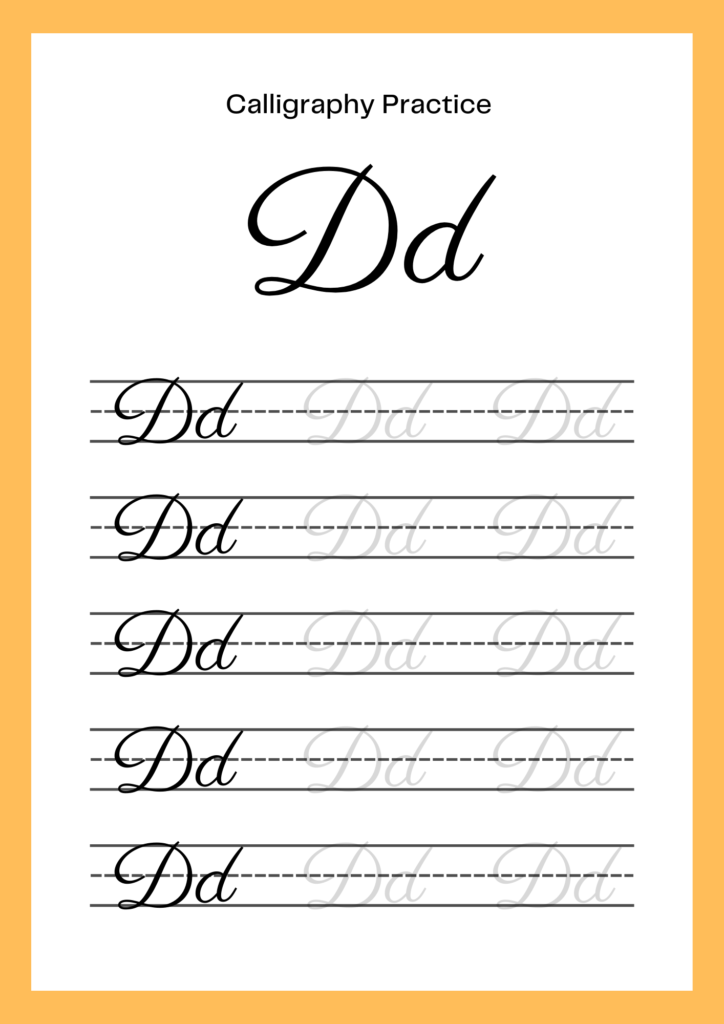
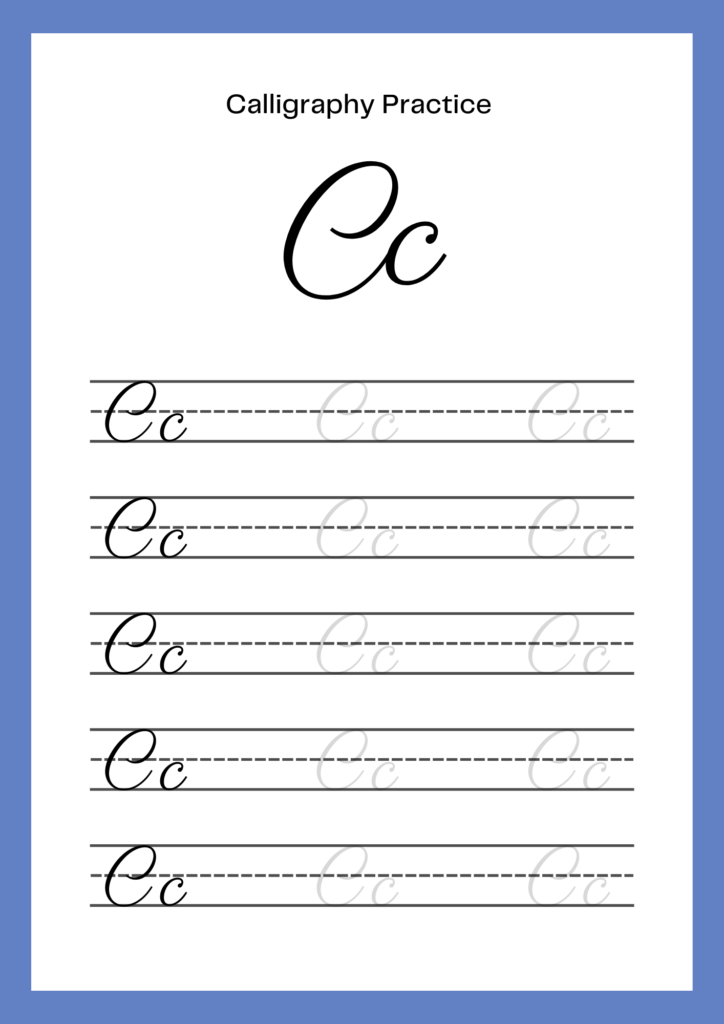
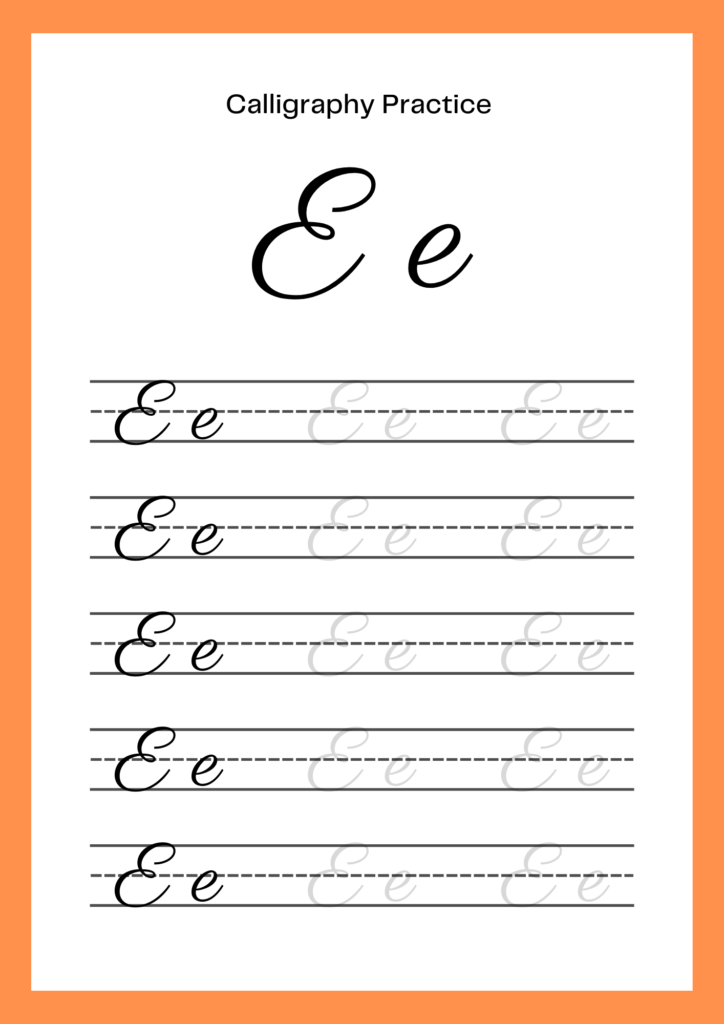
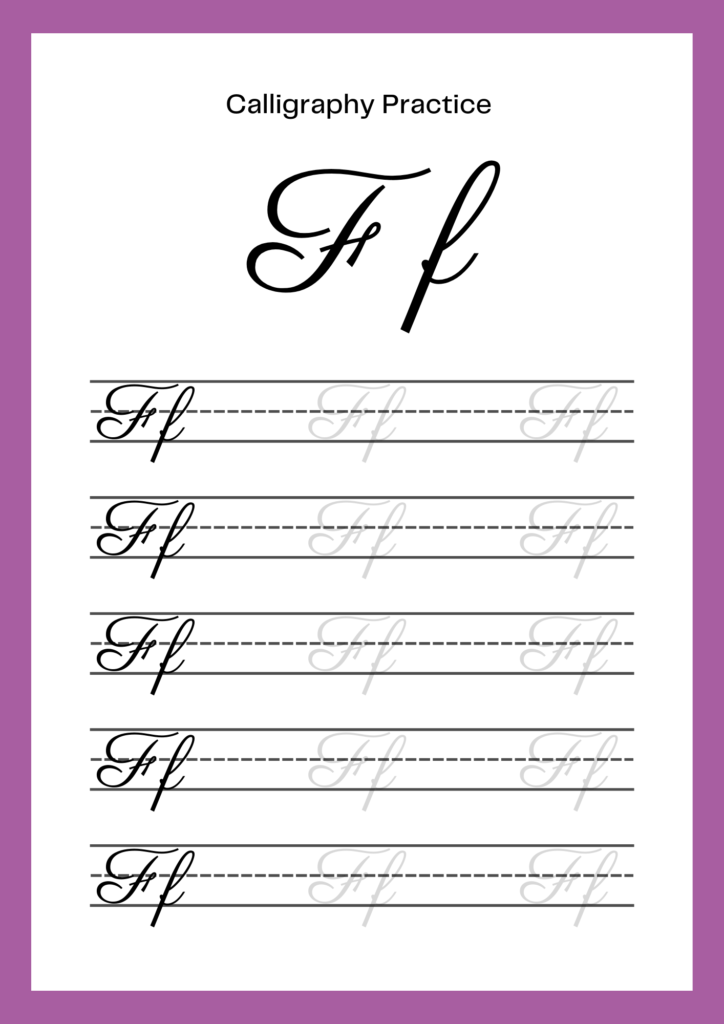
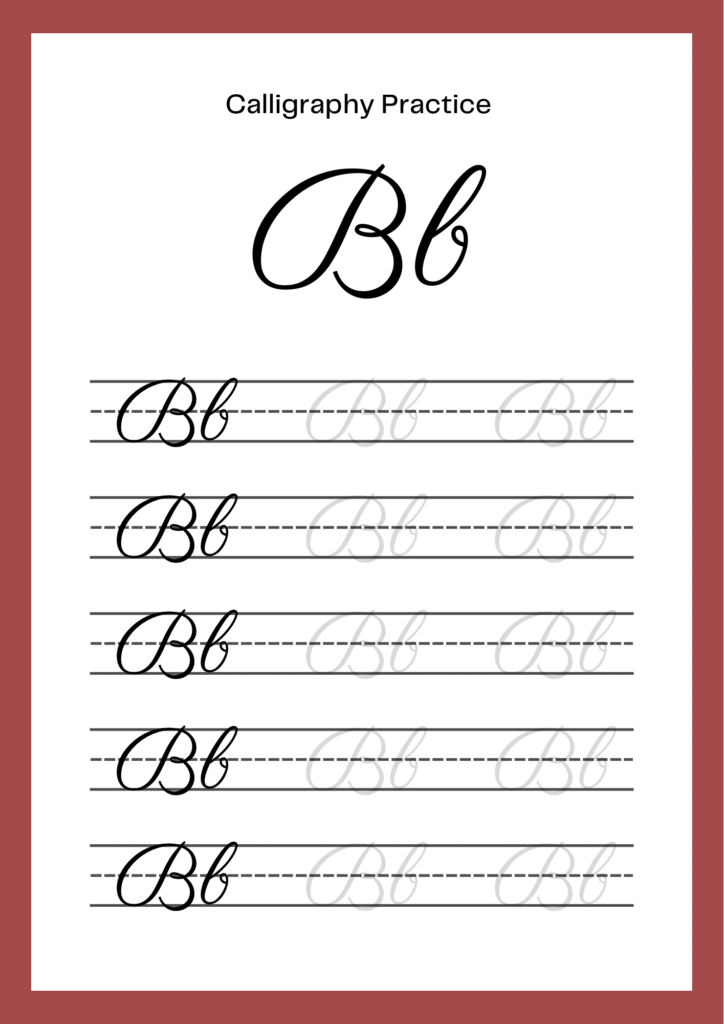
Medieval Period
Islamic Calligraphy
Islamic calligraphy emerged after the advent of Islam in the 7th century CE. It is characterized by its use of the Arabic script and the emphasis on the Qur’an’s text. Styles such as Kufic and Naskh developed, with calligraphy becoming a major decorative element in Islamic art and architecture.
European Medieval Calligraphy
In medieval Europe, calligraphy flourished in the monastic scriptoria, where monks copied manuscripts by hand. Styles like Carolingian minuscule (developed under Charlemagne in the 8th century) and Gothic script (emerging in the 12th century) were prominent. These scripts were used to produce illuminated manuscripts, which are richly decorated with gold, silver, and intricate designs.
Renaissance and Beyond
Renaissance Calligraphy
The Renaissance (14th to 17th centuries) saw a revival of classical learning and a renewed interest in the arts, including calligraphy. Italian humanists developed new scripts such as the Italic hand, which combined elegance and readability. This period also saw the invention of the printing press by Johannes Gutenberg in the 15th century, which began to reduce the need for handwritten books.
Modern and Contemporary Calligraphy
Modern Revival
In the 19th and early 20th centuries, there was a revival of interest in calligraphy, particularly in the West, led by figures like Edward Johnston and Rudolf Koch. Johnston’s work at the beginning of the 20th century, especially his development of the Foundational hand, laid the groundwork for modern Western calligraphy.
Contemporary Calligraphy
Today, calligraphy is a global art form practiced in many styles and scripts. It has expanded beyond traditional methods to include modern tools and digital techniques. Contemporary calligraphy is used in a wide range of applications, from graphic design and typography to fine art and personal expression.
Throughout its history, calligraphy has been more than just beautiful writing; it has been a way to convey cultural values, religious beliefs, and personal expression across civilizations.
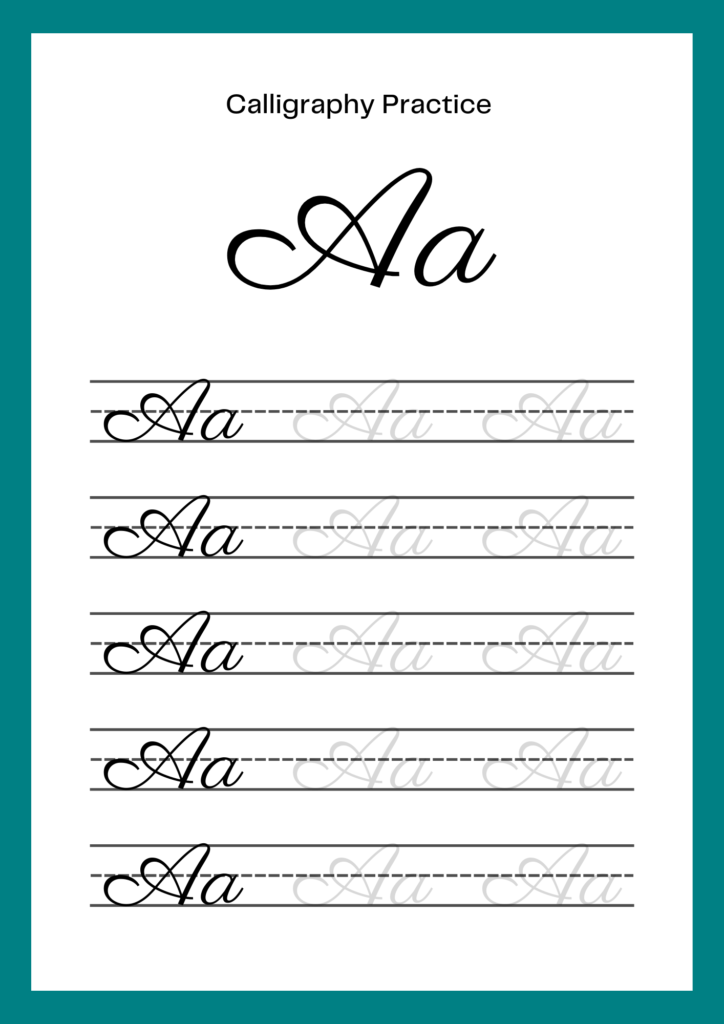
Calligraphy Practice Worksheet for letters A to Z
#free printable calligraphy worksheets
You will also love: Free Printable Handwriting worksheets
Coding for kids: Kids Coding: Unlock the World of Programming